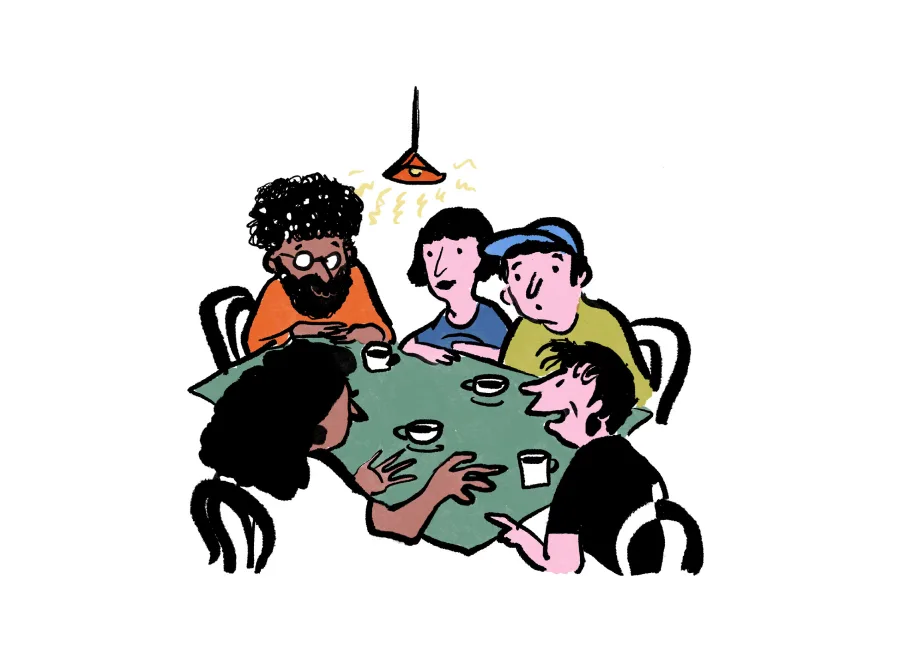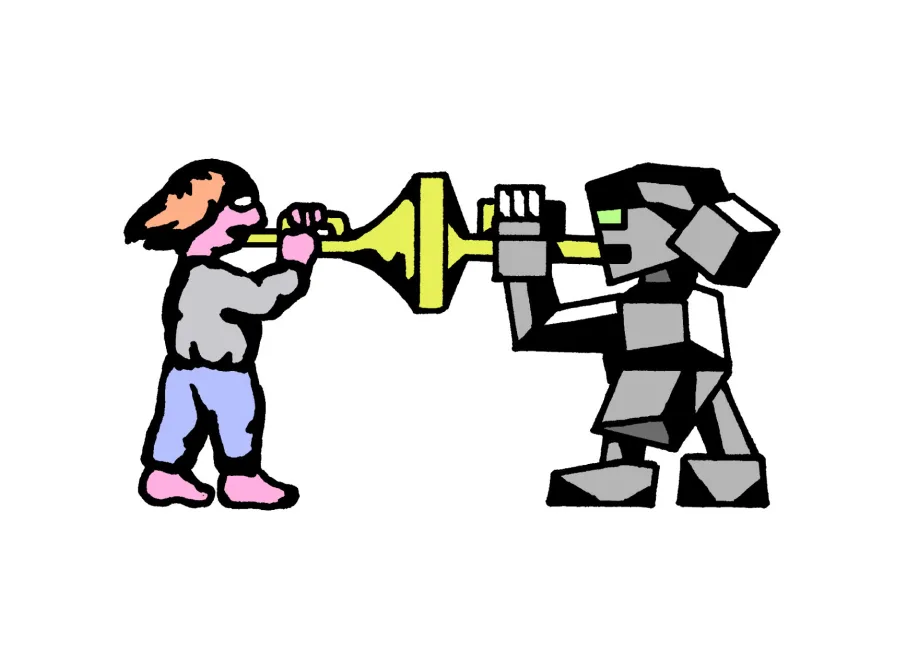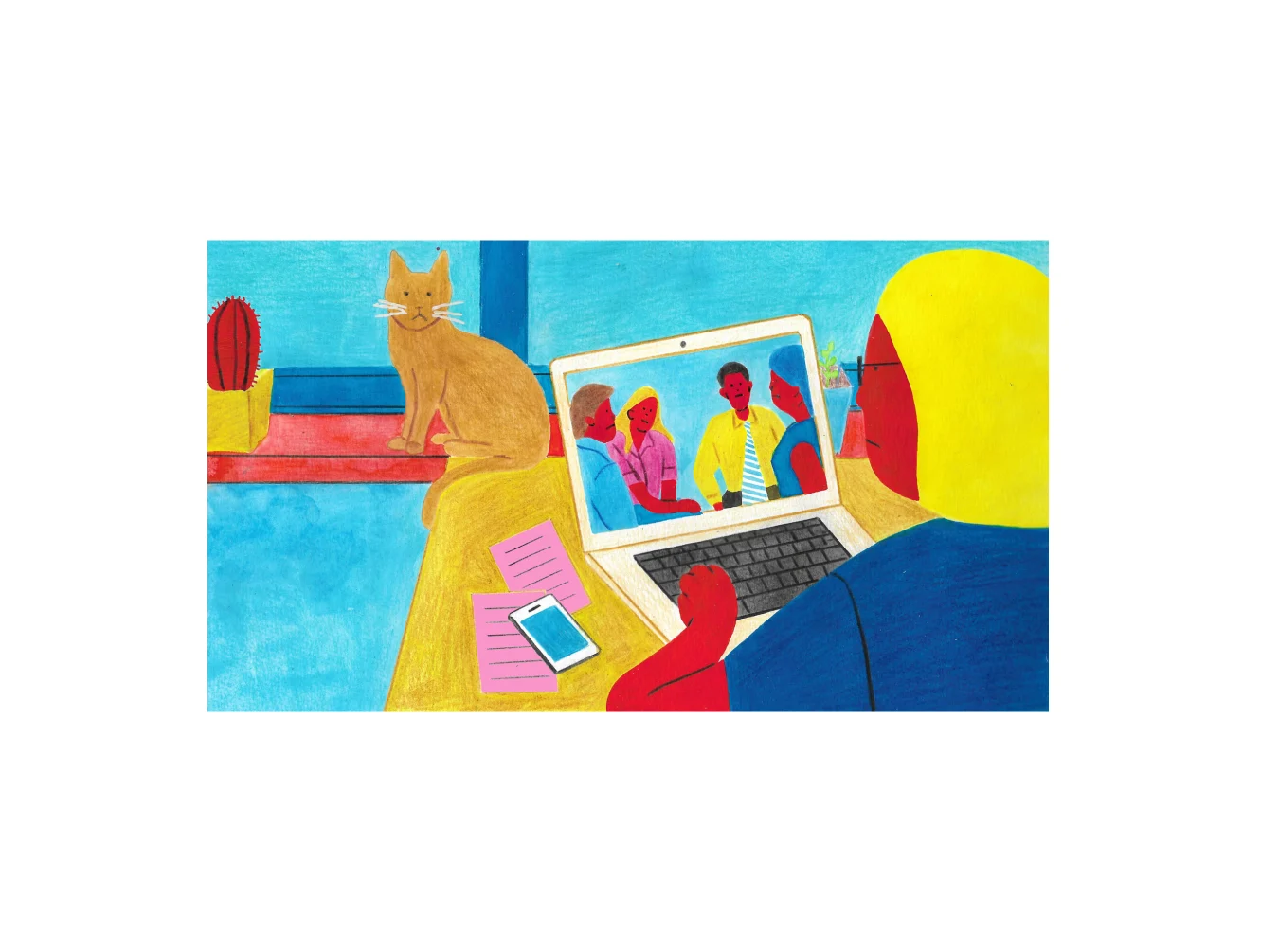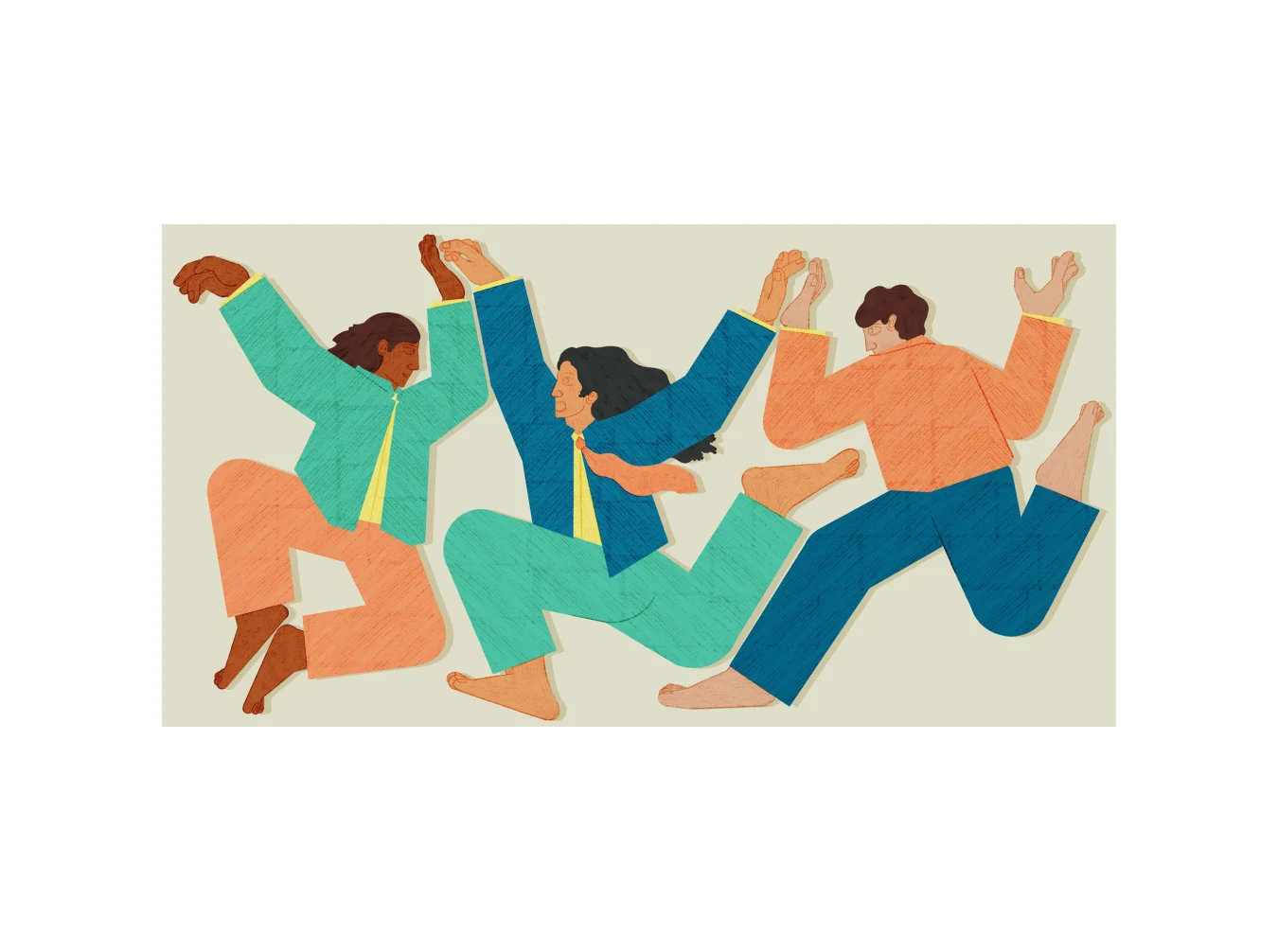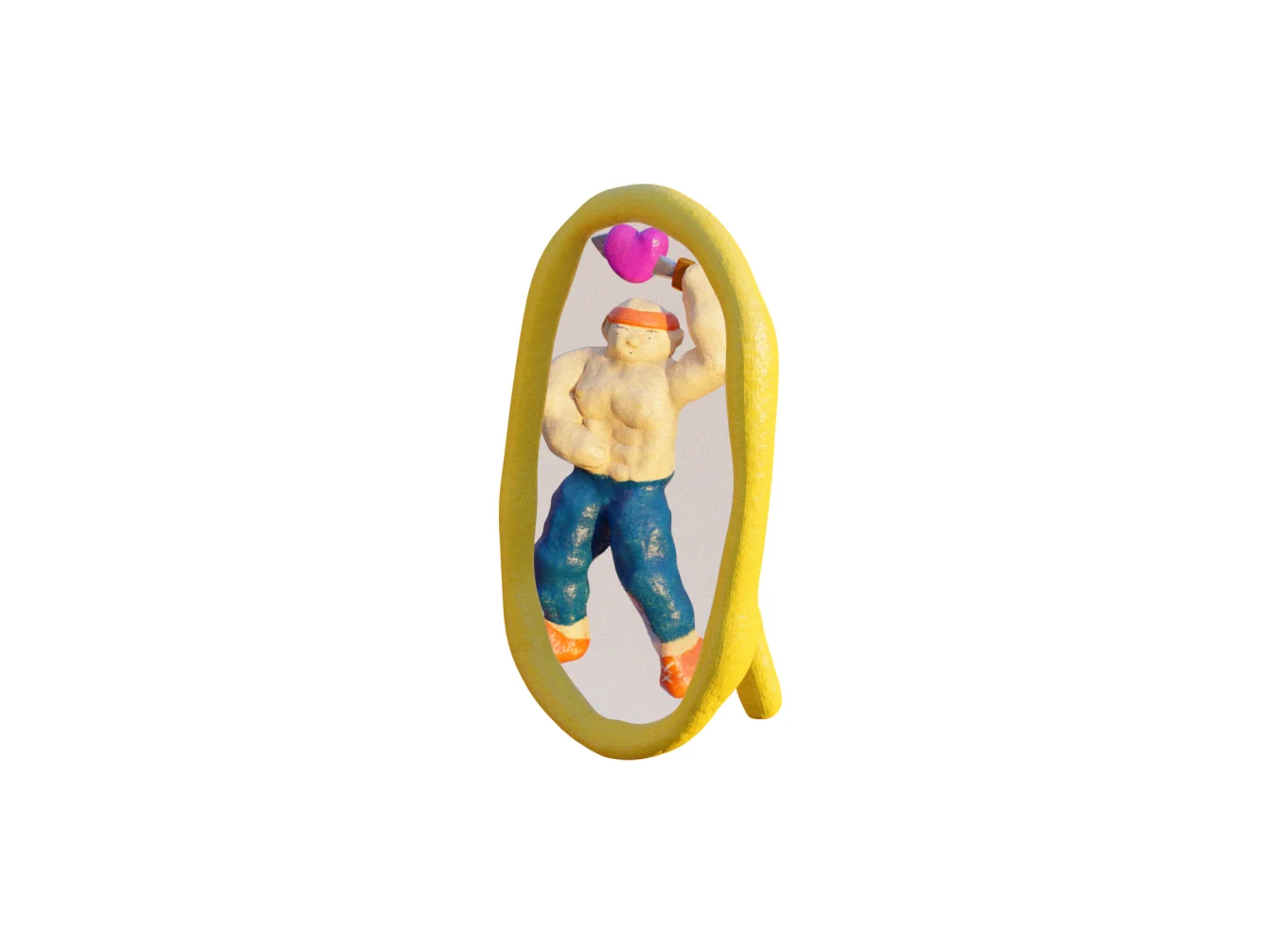

There are perks to being a freelancer, from setting your own schedule to working with a variety of clients. But that freedom can come at a cost in a world designed for those with predictable paychecks: at the bank and the mortgage brokers, the self-employed are often forced to jump through hoops for all but the most basic credit scores and financial products. Here, writer James Cartwright investigates how his fellow freelancers are building their financial profiles.
Artwork by Jan Buchczik.
One of the things you learn very quickly when you first become a freelancer is that doing the work is only half the battle. Once you’ve completed a job and filed your invoice, you enter a new stage of the process which can be as challenging and time-consuming as the work itself. Chasing up payments and keeping your cash flow in check is just one of many survival skills you have to learn to make ends meet. Money is a pain in the ass.
But if you thought money was difficult, just wait until you learn about credit. For many of us, despite our best efforts to make sure those invoices get paid on time so that we, in turn, can pay our rent and bills in a timely fashion, an algorithm somewhere, or an executive at an insurance underwriters, decides that the irregularity of our earnings only affords us the most basic credit score and prevents us from doing things that salaried employees take for granted. If we want to borrow money, rent an apartment, or maybe one day buy a house, we don’t just have to earn the right amount of money. We have to earn it in the right way, too.
If my tone seems a little jaded, it’s because this quirk of the system has affected me regularly over the years, particularly in recent memory. In 2021 I applied for a mortgage and, as part of the process, had to submit detailed financial records for myself and my partner for the three years preceding the application. This is standard practice if you’re self-employed and looking for a mortgage—you need three years of perfect accounts showing steady earnings, not to mention a sizable deposit too. I’ve worked for myself since 2015, so providing the accounts wasn’t a problem, but because of the pattern of my most recent earnings, my mortgage broker told me there was no way I’d qualify for the loan I wanted.
In the three months prior to the application, I’d had a bit of a quiet stretch without much income. This wasn't by accident: I’d had a busy summer and I’d just been paid the final half of a fee from a long-term project. Money was coming in, it just wasn’t coming in neatly each month they way it would if I earned a salary. I explained all of this to the mortgage broker and was told I’d just have to wait until my earnings evened out again. I could apply now if I wished, he said, but it was likely my application would be refused.
If we want to borrow money, rent an apartment, or maybe one day buy a house, we don’t just have to earn the right amount of money. We have to earn it in the right way, too.
This made no sense to me. In the UK, where I’m based, there are roughly 4.29 million self-employed workers making their living without a regular salary or benefits package. This means close to 15% of the workforce aren’t taking home their earnings in a steady monthly stream. So why are they penalized for this?
The short answer is that lenders are slow to catch up with any developments in working habits. For years, they have offered mortgages based on certain criteria that naturally skew towards people who earn a salary. Adjusting those criteria to account for people who fall outside of them takes time and effort and potentially exposes them to risk—although, given the current cost of living crisis, risk is just part of the equation if you’re lending money.
In the wake of the pandemic, this failure to acknowledge the reality of freelance incomes is even harder to swallow. When the UK government announced its coronavirus income relief fund, the self-employed were largely overlooked by the measures. The Self-Employment Income Support Scheme (SEISS) paid out funds to at least 2.7 million people, but left 1.6 million self-employed people without any support. That we’re still being treated as outliers rather than a large part of the taxpaying public is a little offensive.

Things get even more complex with credit if you earn money in a less conventional way than I do. Mic Wright is a freelance journalist based in Norwich who divides his time between commissions for political magazines and publishing a regular (and brilliant) Substack newsletter on media criticism, Conquest of the Useless. He makes a reasonable living from both of these income streams, but has found it difficult in the past to rent property, relying on his partner to guarantee the shared tenancy of their home. “To be really frank,” he says, “I’m just very lucky because my wife is an academic at King's College and has a very respectable and respected position and job. It would be a lot harder for me otherwise, and certainly would have been complicated when we had to fill in all the forms for the place we live now.”
One of the reasons Wright started Conquest of the Useless was to help stabilize his earnings and make himself look more legitimate on paper. It’s not a friendly environment out there for freelance writers and a newsletter, he thought, would plug the gaps when things were slow. His Substack income is paid weekly via Stripe (minus some small processing fees), which offers more consistency than freelancing alone.
“I have 5,374 subscribers in total,” he says. “Of those, 413 are paid subscribers. It's just a bit under 10% at the moment, but it provides a decent percentage of my monthly income now, and it has a regularity to it and a sense of control that freelancing alone didn't have.”

Accessing credit isn’t just important if you want to rent or buy property. Your credit score can affect your ability to secure any kind of personal or business loan. In the creator economy, that can mean the difference between being able to grow your business into something profitable and not being able to get it off the ground at all.
For Wright, this hasn’t been an issue. He’s happy with the slow and steady growth of Conquest of the Useless. “I feel like what I’m doing is a cottage industry,” he says. “On the scale of Substacks, it’s like I'm running a very small coffee shop or something.” But for some of his peers, slow growth and large costs have made their business model a struggle.
For Sophie Yeo of conservation newsletter Inkcap Journal, the desire to grow her base of freelance journalists and experiment with new forms of storytelling has been impeded by the high costs of the platforms she uses. Earlier in 2022, she was forced to take her most successful story of the year offline as Shorthand, the platform that was hosting it, charges a monthly fee of £250. Once you stop paying, your content is removed. Such high costs for platforms and tools make it difficult to make a sustainable living.

But Inkcap is naturally hampered by its small size and its early stage of growth. At the other end of the creator economy sit a different class, the influencers, to whom seemingly everything is granted: untold riches handed over for a single sponsored post. When your following is in the hundreds of thousands and even millions, instead of tens of thousands, the landscape of online finance and credit is a little different, although no less complicated. Banks and credit card companies are struggling to keep up with the way they earn money too.
In part, that’s due to the equally unpredictable nature of generating cash as an influencer. Even programs like the TikTok Creator Fund reward creators based on engagement numbers. “Performance on TikTok is dynamic—it changes naturally—so your funds will ebb and flow in the same way,” the platform says in such a matter-of-fact way that it’s easy to miss the fact they’re essentially saying, “We pay whatever we like, whenever we want.”
In order to qualify for this piecemeal income, creators must first meet a strict set of criteria. “You must be based in the UK, Germany, Italy, France and Spain, be 18 years or older, meet a baseline of 10,000 followers, have over 100,000 video views in the past 30 days and post original content in line with our Community Guidelines.” Sounds an awful lot like the hoops I had to jump through to secure my mortgage, just with regular audience engagement as the currency instead of regular earnings.
This isn’t just happening on TikTok. Throughout the network of the creator economy, creators are being financially rewarded for the consistency of their engagement, and products are springing up to service the needs of this very particular type of online earner. While regular banks are slow to realize the potential of this new generation of freelancer (they still don’t understand the old one), products are emerging to meet their needs.
“The whole reason we exist is we see this entire new class of businesses [who] found a way to make a living from content online just get treated really poorly by banks. Not just on credit cards, [but] on mortgages, on accounts, on taxes, on payments…” said Eric Wei, co-founder of Karat Finance, in an interview with CNBC. Even the most-followed content creators are overlooked by banks.
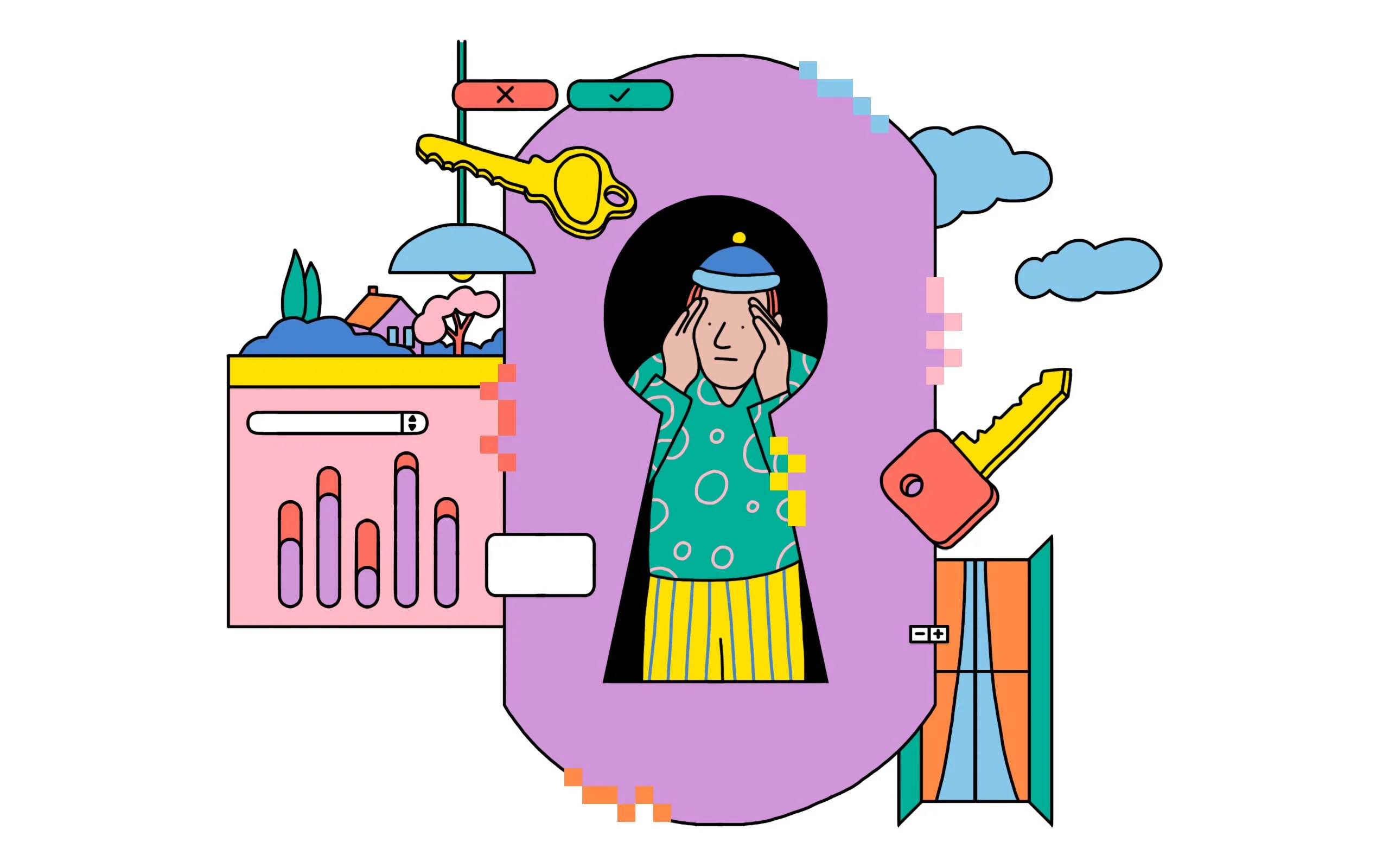
Wei and business partner Will Kim (a former Instagram product manager and Goldman Sachs analyst respectively) recognized a gap in the market to create products for content creators with patchy finances and poor credit history but huge captive audiences. Their Karat Black credit card extends credit to Instagrammers, Youtubers and Substack writers who fit the right audience criteria. Just like the beneficiaries of TikTok’s Creator Fund, their audiences need to be pretty substantial (125,000 followers on Instagram or 65,000 Substack subscribers) but it does reflect a shift in mindset about the importance of regular earnings to access credit. As far as Karat is concerned, the more followers you have, the more credit they’ll give you, regardless of the regularity of your income.
Finally, there are those creators at the vanguard of technology and finance who are only earning in cryptocurrency and are no longer bound to the realms of traditional monetary systems. What of them? A recent editorial in Bitcoin Magazine headlined “Can you buy a house with Bitcoin?”assures readers that yes, you can buy a house with bitcoin, before clarifying that you’d need to find a private seller who’d accept such a transaction and that there’s no way in hell any lenders are offering a bitcoin mortgage. If you’re only transacting in crypto, maybe it’s time to swap some of it for fiat money instead.
All of which leaves me, a freelancer with middling earnings, very much where I was last year, with a patchy credit history, having to fudge my accounts to get a mortgage. My advice to anyone else in my position is this: earn lots of money, or get a big online following. It makes life much easier.





